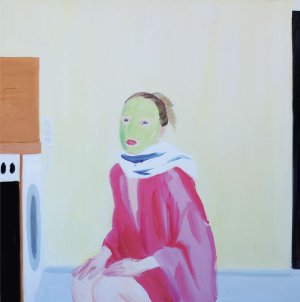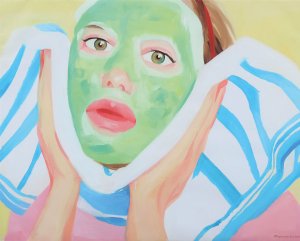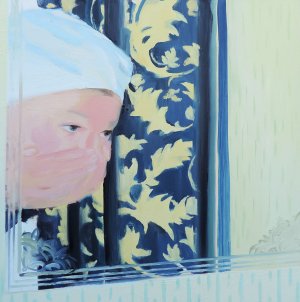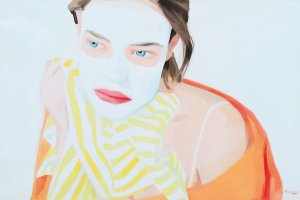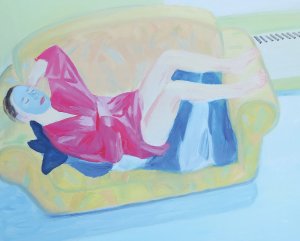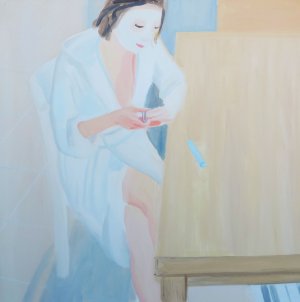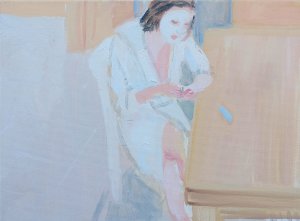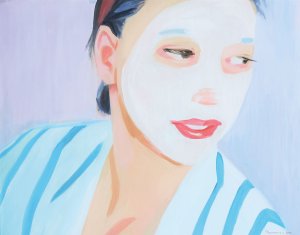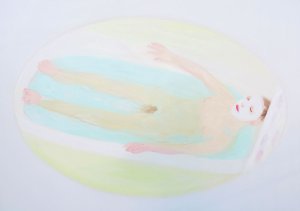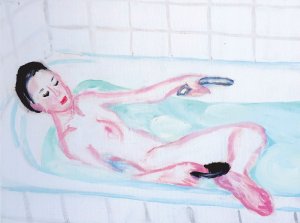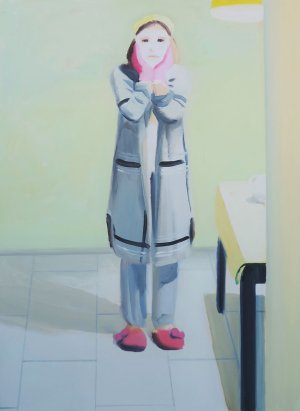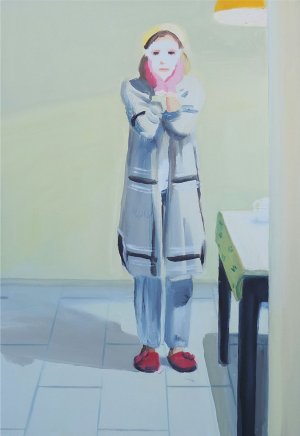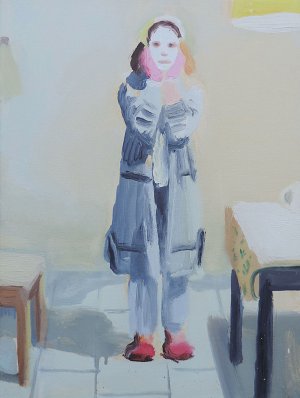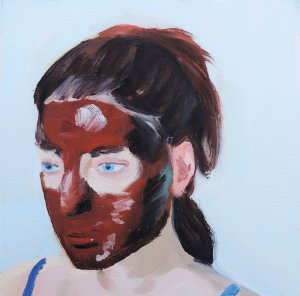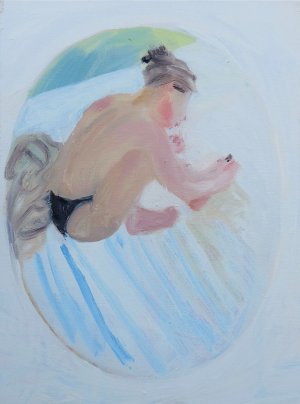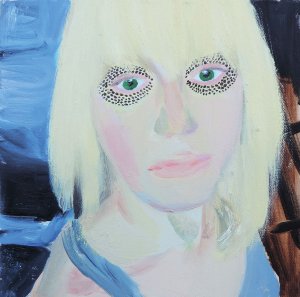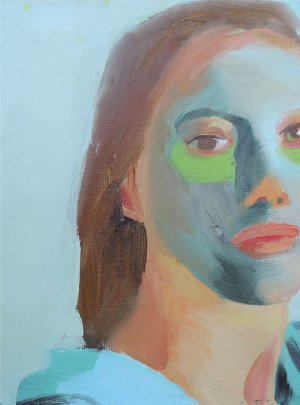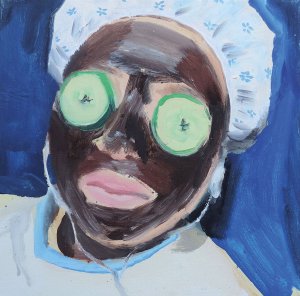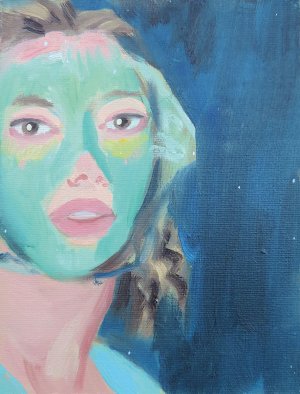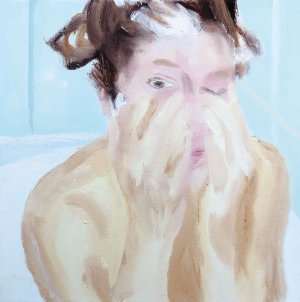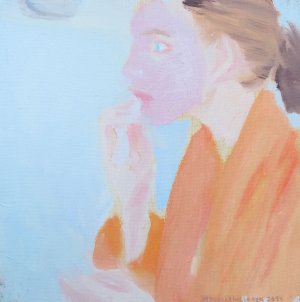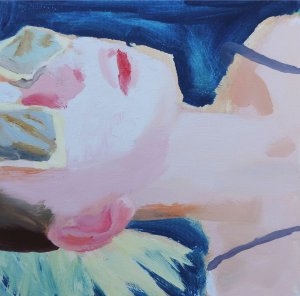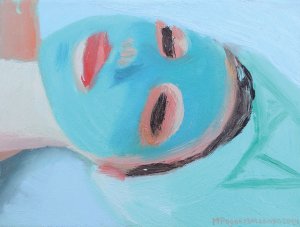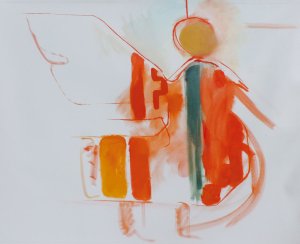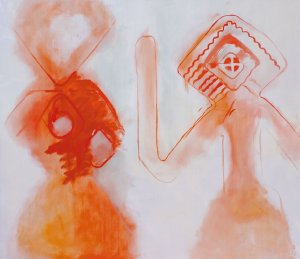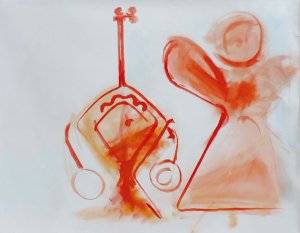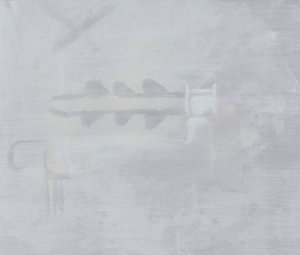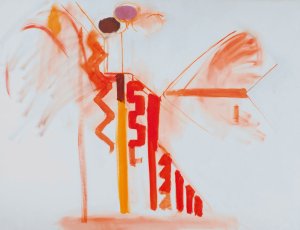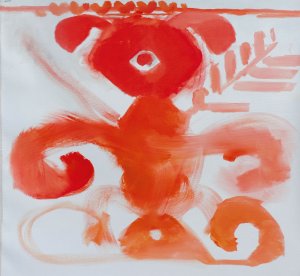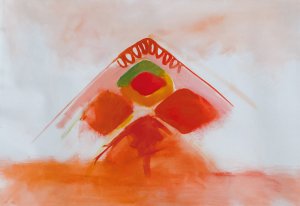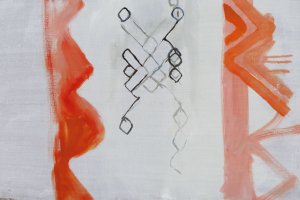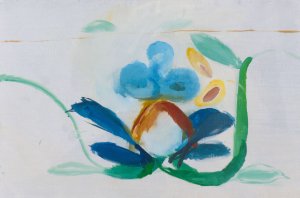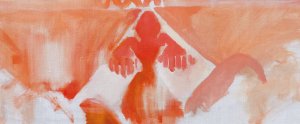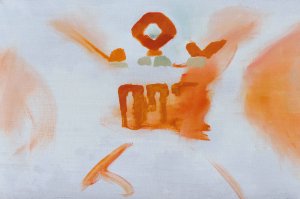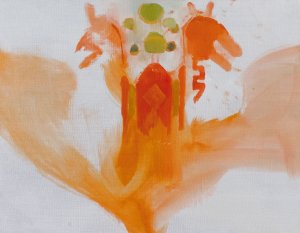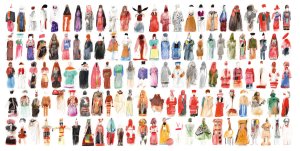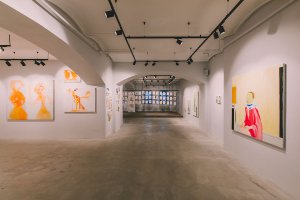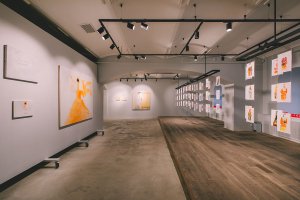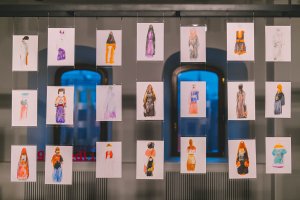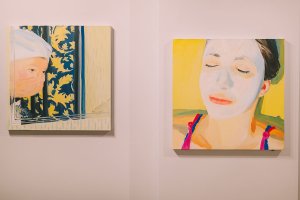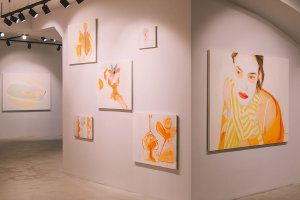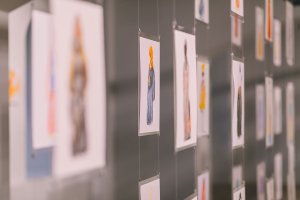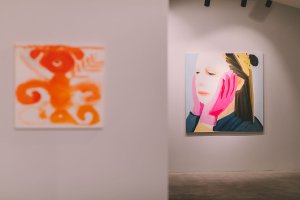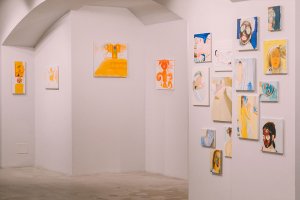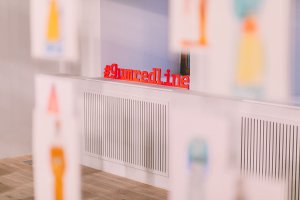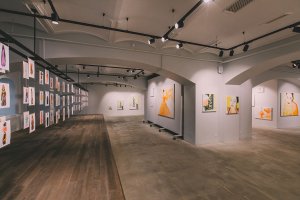Game. Life. Masks. History. Journey. Meaning. Re(connection). Proto(type).
Alexander Pogorzhelsky presents a new series titled Folk embroidery motifs (canvas, oil, 2019, a series of 22 paintings) and the monumental installation Shadows of Forgotten Ancestors which includes 120 drawings (paper, pencil, 2018-2019).
Through the abstract “embroidered” transcendental images on canvases in Folk embroidery motifs, the artist invites us to understand imminent fundamentals. It is no coincidence that pastel tones of orange and white dominate: in the theory of color, these shades are seen as energized both by life and death. Metaphysics. On the other hand, the installation Shadows of Forgotten Ancestors functions in a very particular way and attains a completely distinct sacral meaning within the space of the GUM-Red-Line Gallery. Sketches of clothes as presented against the backdrop of Red Square in Moscow captivate the audience with time-honored historical traditions and revive the collective memory of generations of people. Aeternum.
Maria Pogorzhelskaya presents a new project – Private Zone (canvas, oil, 2007-2019, a series of 30 paintings). The series will be presented for the first time in complete form at the exhibition. Most of the paintings were created ad hoc in 2019, especially for the exhibition. Visitors will also see portrait of Natalia Vodianova which the artist painted in 2007 for Vogue.
Private Zone occupies the space of individuality, immediacy, precise replication of a specific moment in a woman’s private life. Photographic memory and the use of “fleeting light” on surfaces – these are the main tools of the artist who works in the best traditions of “new realism”. Pieces in small format are deliberately and repeatedly used as studies for larger works, similar to the relationship between the negative and the final photo. A sort of “metamorphosis of the étude is displayed in a separate series of specific paintings that can be viewed at the exhibition. Hic et nunc.
The Proto(type) exhibition allows us to understand the trend in contemporary art where spaces are set in between Eastern and Western art – the discovery of objectively different yet logically consistent approaches to art.
The narrative of the exhibition is not linked to the stylistic flourishes and characteristic forms that can be discovered in the works by the Pogorzhelskys; it rather touches upon the “tangent lines” that are present in similar visual art practices and the delicate use of color displayed by both artists. The energy of two- dimensional bodies on a flat background.
Masks. These are the elements that transport the viewer through history to the origins and uniqueness. The masks appear both in the folk/ceremonial clothes of our ancestors and timeless abstract mythological images (Alexander Pogorzhelsky), as well as the everyday self-care routines of women and precise portraits (frequently self-portrait) at a concrete moment in time, the “here and now” reality (Maria Pogorzhelskaya). The search for identity in the past and expression of essential truths through the real and commonplace. The sacralization of both historical and individual memory.
The connotations of time are interpreted by both artists through the concept of memory, through deliberate disapproval of the proliferation of “non-places” in contemporary society, as described in the anthropology of “supermodernity” by Augé and presented in social spaces. “A space which cannot be defined as relational, or historical, or concerned with identity will be a non-place... Supermodernity produces non-places or, in other words, spaces which are not themselves anthropological places and which unlike Baudelairian modernity, do no integrate the earlier places,... ‘places of memory’”*.
The presented curated project is an attempt to guide the viewer to view the exhibition space as a “place of memory” though an intuitive (as Bergson understood it to be) recreation of reality via the concept of a prototype. Only intuition as a direct experience of an artwork can penetrate the latter’s intimate essence**.
Thus, we attain an “emotional and intuitive” understanding of reality, be it true reality or supposed reality, through the presented artworks.
Exhibition curator, text author – Tatiana Martyanova
* Marc Augé, Non-Places. Introduction to an Anthropology of Supermodernity, 1992
** Henri Bergson, L’Évolution créatrice, 1907
3D tour
Artists of (Proto)Type.
Maria Pogorzhelskaya
Alexander Pogorzhelsky








